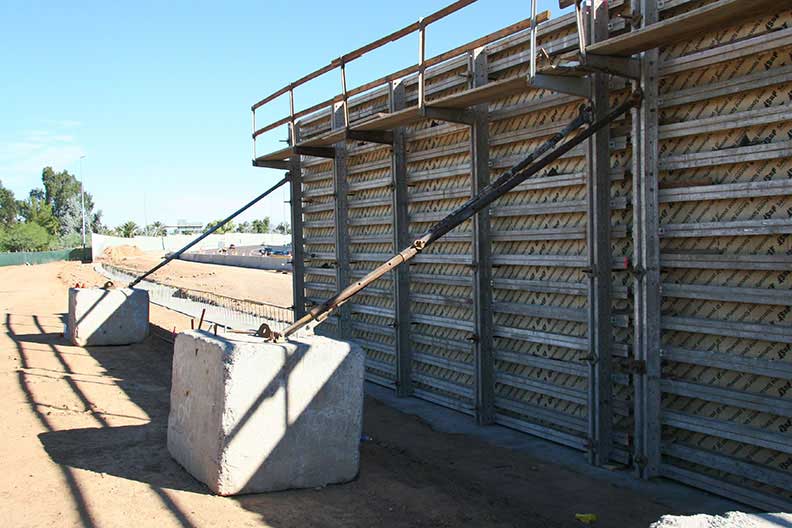Transportation Defined: Deadman Anchors
Transportation Defined: Deadman Anchors

While their name might sound somewhat morbid, Deadman Anchors are actually nothing to be afraid of. In fact, they’re very handy on a project site...
Primarily used as anchors (as the name implies), a deadman anchor can also be used to resist forces acting in tension or compression.
Take the photo at right as an example – it was snapped on the Loop 101 widening project and shows a deadman anchor in use.
What you see is a wall form (kind of like a mold that is used to shape the wall). Concrete is poured into the form and, once it hardens, the forms are removed to reveal the finished wall.

Another view of the anchors at work.
But, before the concrete sets, it is in a liquid state and that liquid naturally wants to push outward, equally in all directions. The greatest lateral forces acting on the wall are at the bottom (due to gravity), but because the wall forms are pinned into the concrete footer, blowouts are prevented. That deadman anchor (along with the rod anchor) is actually preventing the wall from overturning before it sets.
These things are very durable and contractors typically have a steady supply they can use for projects. They can be built to suit the needs of the contractor and come in a variety of sizes (the one above is roughly 4,000 lbs.). They’re fairly easy to construct (as long as you have some extra concrete). Contractors will create a box form, into which concrete is poured. The next day, the form is removed and the anchor is complete.
Deadman anchors are primarily utilized to aid in the construction process, though you might see them used at special events to close off a public street and prevent vehicle access.
Transportation Defined is a series of explanatory blog posts designed to define the things you see on your everyday commute. Let us know if there's something you'd like to see explained ... leave a comment here on the blog or over on our Facebook page!
